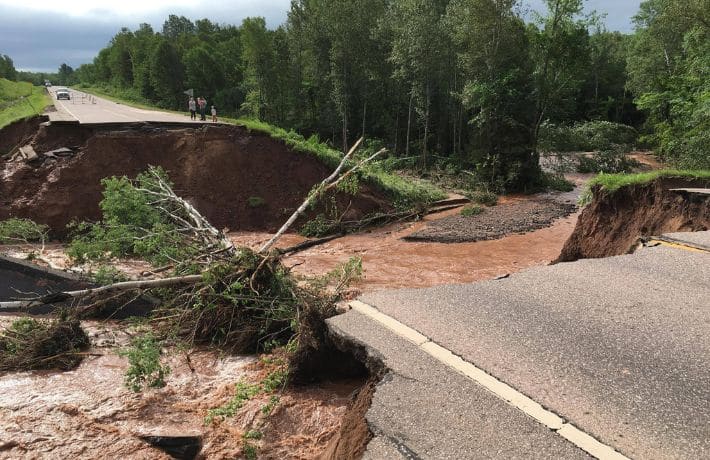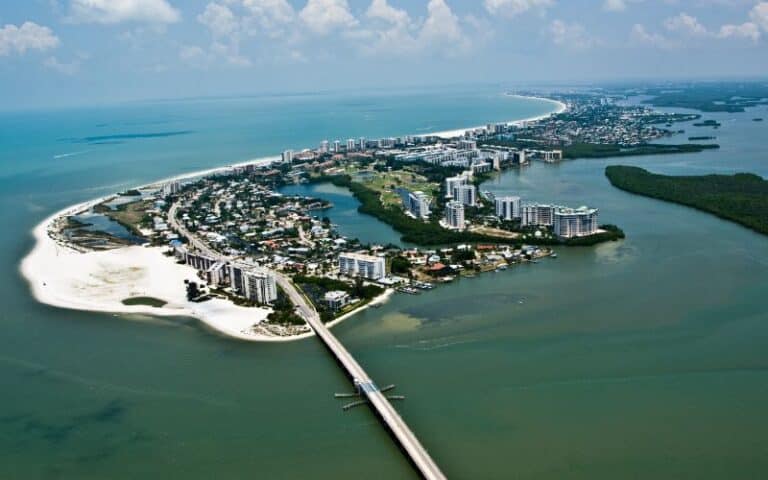No Havens from Climate Change

I recently participated in a virtual panel discussion on the topic “Is Wisconsin and the Midwest a ‘haven’ from climate change?” Some people are saying the Midwest is at less risk from climate change, probably because they think the largest impact will occur on the coasts where sea level rise is happening. Unfortunately, they are ignoring the extreme rainfall events that are occurring in many in-land states and cities, like Kentucky, Missouri, Montana, Tennessee, West Virginia, Dallas, and Las Vegas, and elsewhere.
The vast majority of flood maps in Wisconsin are based on the rainfall estimates prior to 2010, when hydrologists still thought that past rainfalls could be used to predict future rainfall—that was called stationarity. We are now in a period of non-stationarity, where climate change is causing more extreme rainfalls, so those old predictions will underestimate the 1% rainfall by significant margins. The last Atlas 14 update of 1% rainfall estimates for Wisconsin was in 2013 (based on pre-2010 data), and it showed a 33% increase in the 1% rainfall estimates. That means much of the state went from estimates of 6 inches in 24 hours to 8 inches in 24 hours.
Wisconsin is not immune to the increase in heavy rainfall events that are plaguing other areas of the country, whether it’s the Houston area after Hurricane Harvey, western middle Tennessee last year, or St. Louis just a couple of months ago. One result is the same — people who thought they were safe from flooding suddenly find themselves dealing with devastating floods, and the economically challenged populations are the ones most affected because they have less ability to recover financially. Unfortunately, many federal mitigation programs historically have not addressed equity and struggled to meet the needs of underserved communities. We are encouraged that FEMA is now trying to address equity in its mitigation programs, but that will take time and some changes in approaches and partnerships, especially with states.
Wisconsin is a state that has been proactive in mitigation activity to better address some of these issues. For example, the state mitigation program makes buyouts a priority, with efforts to obtain comparable housing elsewhere in the community. The Milwaukee Metropolitan Sewerage District (MMSD), under Kevin Shafer’s leadership, has gone from trying to engineer streams and rivers to using nature-based approaches to reduce flooding. An example is replacing old concrete lined channels with buyouts and greenways to allow flooding of the greenways but not houses. A 2019 issue brief by Pew highlights some of the MMSD’s accomplishments in flood mitigation.
We must remember that most homebuyers do not decide where to build their home, they just buy houses or lots that have been created by developers, most of whom lobby city and county councils to permit them to develop subdivisions in cornfields and cow pastures (or wetlands) because it’s cheap land, thus increasing more profits for the developer. Council members like development because the additional property taxes increase revenue for the community. Yet some municipalities, like Milwaukee and Charlotte/Mecklenburg, NC, understand that is not a resilient solution, and so they work hard to move houses and people out of high-risk areas so people and nature can work together to reduce flood losses.
Remember, there are no “havens” from climate change. Communities must work hard and think smart to create a resilient community for their citizens.
NOTE: In a couple weeks, the recording of webinar I participated in will be available here at no cost. The panel was part of this year’s Idea Fest, a multi-day event in Madison tackling issues related to government, business, education, social justice, and culture.

